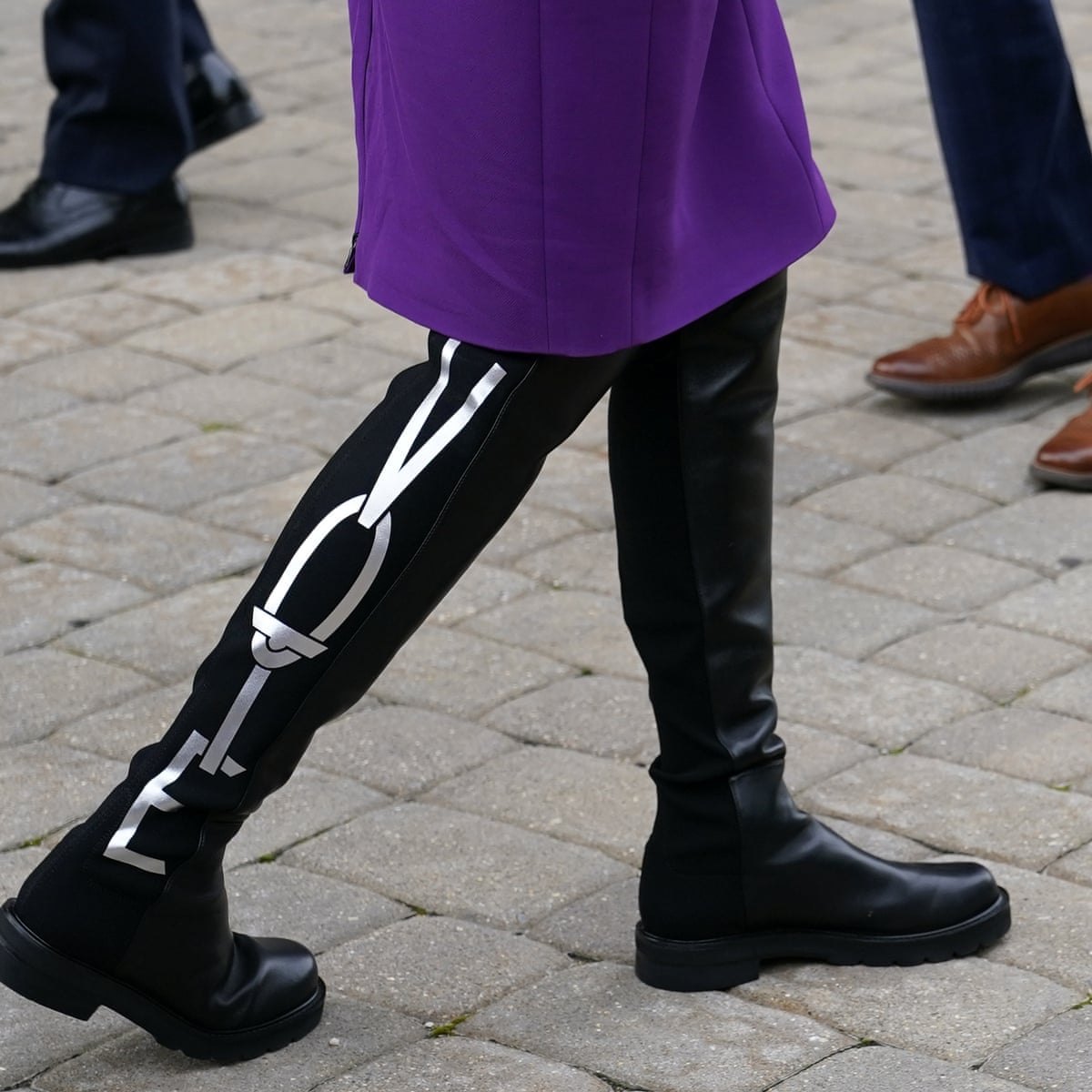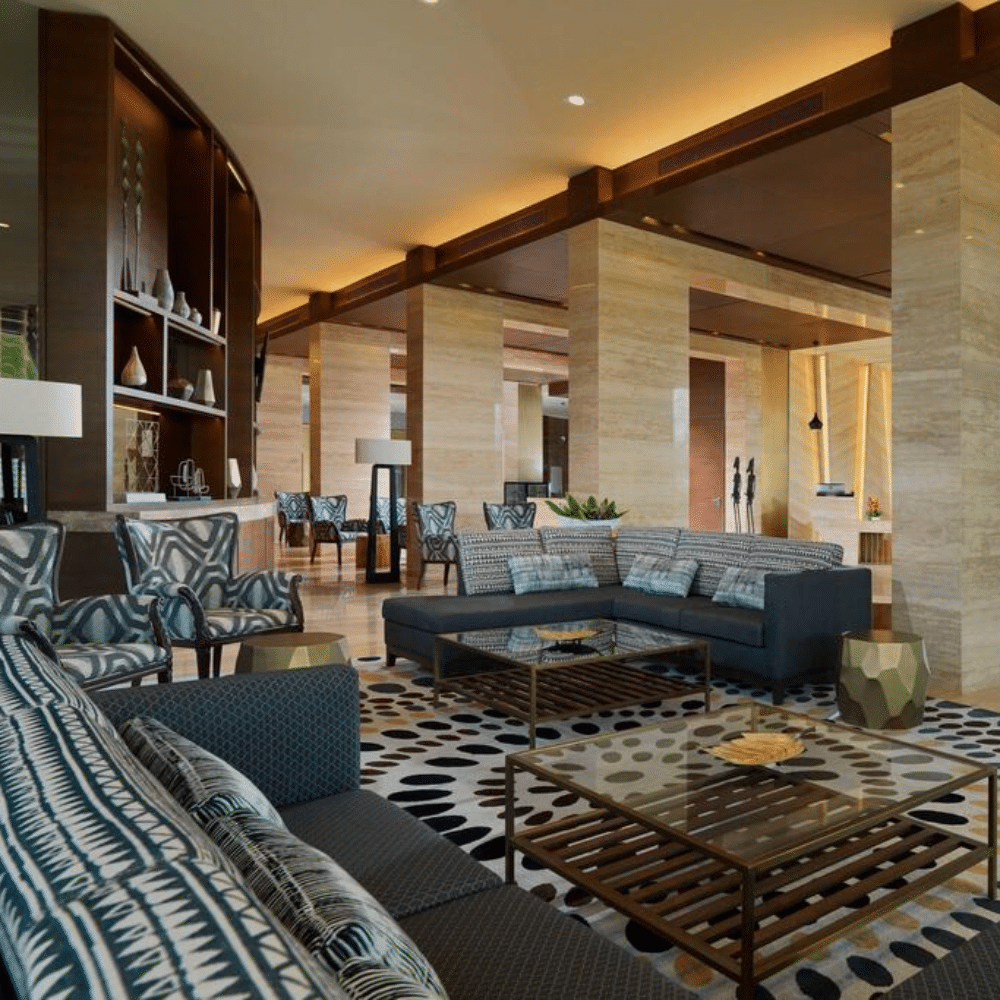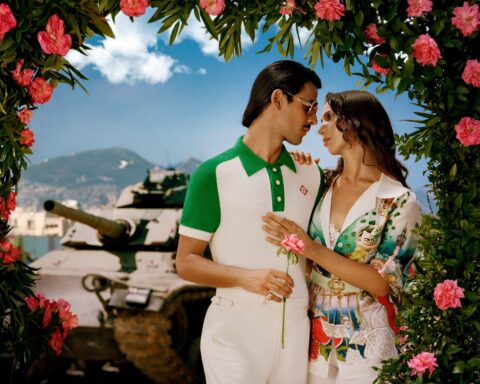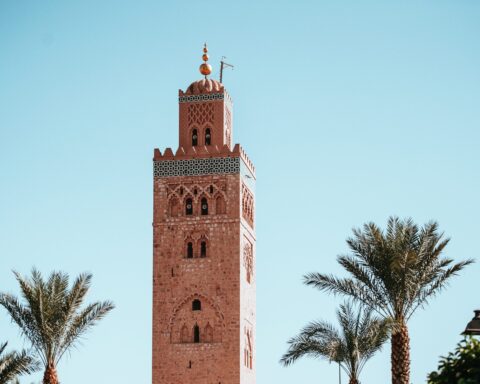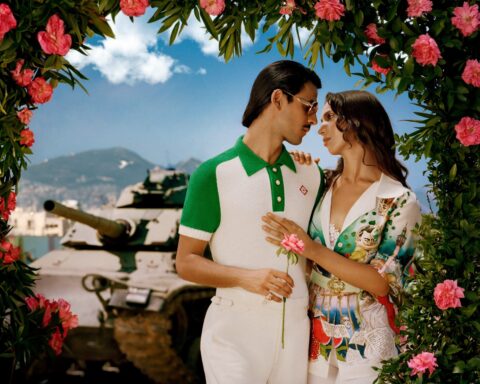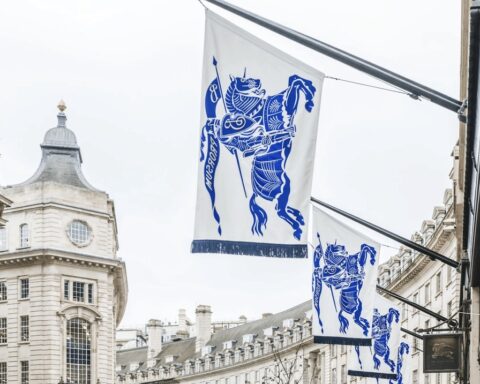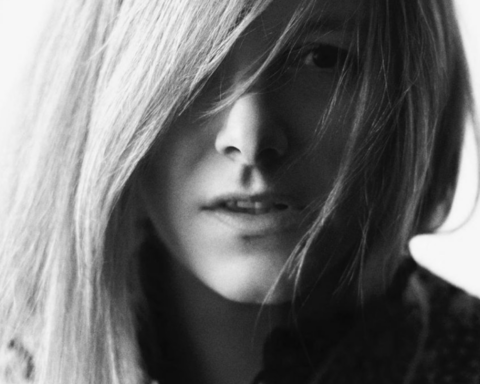[vc_row njt-role=”people-in-the-roles” njt-role-user-roles=”administrator,armember”][vc_column][vc_column_text]
The Covid-19 pandemic will have greatly affected the global fashion industry. According to a recent report by the consulting firm McKinsey, annual profits for fashion houses are expected to decline by about 90% by the end of 2020, after increasing by 4% last year. In addition to its economic repercussions, the health crisis has also highlighted some harmful practices in the fashion industry, including environmental impact and lack of social inclusion. Under fire, how has the global fashion industry adapted ?
For Shefalee Vasudev, founding editor-in-chief of India’s Voice of Fashion magazine, this year was marked by the “great unmasking” of fashion. “The invisible side of a beautiful garment or product has been revealed,” she said from Delhi. In his book Powder Room: The Untold Story of Indian Fashion, master yogi and writer Jaggi Vasudev wrote that “poorly paid workers, unequal profits and lack of copyright credits for artisans” are some of the most pressing problems revealed by the health crisis in India.
In the United States, the resurgence of the Black Lives Matter movement has forced major fashion brands to rethink their communication strategies. For Lindsay Peoples Wagner, these efforts remain, however, superfluous: “I don’t think there’s any real intention behind the online statements that they bode well for lasting change,” she said in an email to CNN last June. The editor of Teen Vogue even took a direct line at the players in the fashion industry: “Anyone can join the Black Lives Matter movement right now on social networks, but what are you doing at home, in your office, with your connections, with the power you have?”. A few months later, Lindsay Peoples Wagner launched the Black Fashion Council with publicist Sandrine Charles. The purpose of the organization is to empower the fashion industry by promoting better representation of black models.
Independently of the models who wear them, the clothes themselves have undergone important transformations this year. Facial masks have become a must-have, so much so that some brands have created entire lines of pieces with antimicrobial properties. Clothing that is protective, but also more comfortable. Reflecting a change in mentality, loungewear has gained in popularity. In its annual report, Lyst Fashion Platform reviewed research data from more than 100 million online shoppers and found that Birkenstock clogs, Crocs, UGG slippers and Nike joggers were among the most sought-after garments of 2020.
That said, fashion is not so much about “Street Wear” as it is about “Statement-wear”, i.e. clothing worn to convey strong symbolic messages. For example, the Silver work suit brand and the Supermajority group launched a campaign encouraging celebrities to wear pink suits, a color that stands as a banner of female strength and solidarity. More specifically, the aim of the movement was to encourage women to exercise their right to vote, on the eve of the November 2020 presidential elections. As part of the same approach, designer Chari Cuthbert created a “VOTE” necklace worn by Michelle Obama.
It would therefore seem that 2020 will be the year of an increase in “responsible” purchases, motivated by ethical criteria, both on a human and environmental level. In a report published in April, the fashion house Lyst noted a 69% increase in the search for “vegan leather” compared to 2019.
In Nigeria, Creative Director Omoyemi Akerele said international sourcing of materials was becoming a challenge, so designers and the wider community were being encouraged to create more vertically integrated businesses. She said, “This has reduced waste in the system and empowered our community of craftsmen and local supply chains, generating income for them in the midst of inflation.” In India, a number of charities have supported karigars (craftsmen) according to Shefalee Vasudev. This focus on a Made in India production has been facilitated by the increasing use of e-commerce.
Indeed, the year 2020 will have largely begun the digital transition of the fashion industry. From Shanghai to London, all Fashion Week has been digitized. In September, for example, the Burberry brand broadcast its fashion show on the Twitch platform during London Fashion Week. Later that month, Jeremy Scott, Creative Director of Moschino, made a video in which he presented a microscopic version of his collection using puppets. Already in May, Congolese designer Anifa Mvuemba, founder of the Hanifa label, presented a 3D collection in streaming. Thanks to all these initiatives, the fashion industry has “advanced five years in the adoption of digital technology by consumers and businesses, in just a few months,” according to the McKinsey agency report.
Ultimately, the year 2020 will have accelerated the fashion industry’s trend towards a more responsible future. The trends of inclusion and sustainability observed during this period of crisis are not expected to be abandoned in 2021, attesting to a real change in the sector.
Read also > IS “NO GENDER” FASHION A REAL PROGRESS ?
Featured Photo : Jill Biden’s ‘Vote’ boots designed by Stuart Weitzman. Photograph: © Patrick Semansky/AP[/vc_column_text][/vc_column][/vc_row][vc_row njt-role=”not-logged-in”][vc_column][vc_column_text]
The Covid-19 pandemic will have greatly affected the global fashion industry. According to a recent report by the consulting firm McKinsey, annual profits for fashion houses are expected to decline by about 90% by the end of 2020, after increasing by 4% last year. In addition to its economic repercussions, the health crisis has also highlighted some harmful practices in the fashion industry, including environmental impact and lack of social inclusion. Under fire, how has the global fashion industry adapted ?
For Shefalee Vasudev, founding editor-in-chief of India’s Voice of Fashion magazine, this year was marked by the “great unmasking” of fashion. “The invisible side of a beautiful garment or product has been revealed,” she said from Delhi. In his book Powder Room: The Untold Story of Indian Fashion, master yogi and writer Jaggi Vasudev wrote that “poorly paid workers, unequal profits and lack of copyright credits for artisans” are some of the most pressing problems revealed by the health crisis in India.
In the United States, the resurgence of the Black Lives Matter movement has forced major fashion brands to rethink their communication strategies. For Lindsay Peoples Wagner, these efforts remain, however, superfluous: “I don’t think there’s any real intention behind the online statements that they bode well for lasting change,” she said in an email to CNN last June. The editor of Teen Vogue even took a direct line at the players in the fashion industry: “Anyone can join the Black Lives Matter movement right now on social networks, but what are you doing at home, in your office, with your connections, with the power you have?”. A few months later, Lindsay Peoples Wagner launched the Black Fashion Council with publicist Sandrine Charles. The purpose of the organization is to empower the fashion industry by promoting better representation of black models.
Independently of the models who wear them, the clothes themselves have undergone important transformations this year. Facial masks have become a must-have, so much so that some brands have created entire lines of pieces with antimicrobial properties. Clothing that is protective, but also more comfortable. Reflecting a change in mentality, loungewear has gained in popularity. In its annual report, Lyst Fashion Platform reviewed research data from more than 100 million online shoppers and found that Birkenstock clogs, Crocs, UGG slippers and Nike joggers were among the most sought-after garments of 2020.
[…][/vc_column_text][vc_cta h2=”This article is for subscribers only.” h2_font_container=”font_size:16″ h2_use_theme_fonts=”yes” h4=”Subscribe now!” h4_font_container=”font_size:32|line_height:bas” h4_use_theme_fonts=”yes” txt_align=”center” color=”black” add_button=”right” btn_title=”I SUBSCRIBE!” btn_color=”danger” btn_size=”lg” btn_align=”center” use_custom_fonts_h2=”true” use_custom_fonts_h4=”true” btn_button_block=”true” btn_custom_onclick=”true” btn_link=”url:https%3A%2F%2Ftest2023.luxus-plus.com%2Fen%2Fabonnements-et-newsletter-2-2%2F|||”]Unlimited access to all the articles and live a new reading experience, preview contents, exclusive newsletters…
Already have an account? Log in.[/vc_cta][vc_column_text]Featured Photo : Jill Biden’s ‘Vote’ boots designed by Stuart Weitzman. Photograph: © Patrick Semansky/AP[/vc_column_text][/vc_column][/vc_row][vc_row njt-role=”people-in-the-roles”][vc_column][vc_column_text]
The Covid-19 pandemic will have greatly affected the global fashion industry. According to a recent report by the consulting firm McKinsey, annual profits for fashion houses are expected to decline by about 90% by the end of 2020, after increasing by 4% last year. In addition to its economic repercussions, the health crisis has also highlighted some harmful practices in the fashion industry, including environmental impact and lack of social inclusion. Under fire, how has the global fashion industry adapted ?
For Shefalee Vasudev, founding editor-in-chief of India’s Voice of Fashion magazine, this year was marked by the “great unmasking” of fashion. “The invisible side of a beautiful garment or product has been revealed,” she said from Delhi. In his book Powder Room: The Untold Story of Indian Fashion, master yogi and writer Jaggi Vasudev wrote that “poorly paid workers, unequal profits and lack of copyright credits for artisans” are some of the most pressing problems revealed by the health crisis in India.
In the United States, the resurgence of the Black Lives Matter movement has forced major fashion brands to rethink their communication strategies. For Lindsay Peoples Wagner, these efforts remain, however, superfluous: “I don’t think there’s any real intention behind the online statements that they bode well for lasting change,” she said in an email to CNN last June. The editor of Teen Vogue even took a direct line at the players in the fashion industry: “Anyone can join the Black Lives Matter movement right now on social networks, but what are you doing at home, in your office, with your connections, with the power you have?”. A few months later, Lindsay Peoples Wagner launched the Black Fashion Council with publicist Sandrine Charles. The purpose of the organization is to empower the fashion industry by promoting better representation of black models.
Independently of the models who wear them, the clothes themselves have undergone important transformations this year. Facial masks have become a must-have, so much so that some brands have created entire lines of pieces with antimicrobial properties. Clothing that is protective, but also more comfortable. Reflecting a change in mentality, loungewear has gained in popularity. In its annual report, Lyst Fashion Platform reviewed research data from more than 100 million online shoppers and found that Birkenstock clogs, Crocs, UGG slippers and Nike joggers were among the most sought-after garments of 2020.
[…][/vc_column_text][vc_cta h2=”This article is for subscribers only.” h2_font_container=”font_size:16″ h2_use_theme_fonts=”yes” h4=”Subscribe now!” h4_font_container=”font_size:32|line_height:bas” h4_use_theme_fonts=”yes” txt_align=”center” color=”black” add_button=”right” btn_title=”I SUBSCRIBE!” btn_color=”danger” btn_size=”lg” btn_align=”center” use_custom_fonts_h2=”true” use_custom_fonts_h4=”true” btn_button_block=”true” btn_custom_onclick=”true” btn_link=”url:https%3A%2F%2Ftest2023.luxus-plus.com%2Fen%2Fabonnements-et-newsletter-2-2%2F|||”]Unlimited access to all the articles and live a new reading experience, preview contents, exclusive newsletters…
Already have an account? Log in.[/vc_cta][vc_column_text]Featured Photo : Jill Biden’s ‘Vote’ boots designed by Stuart Weitzman. Photograph: © Patrick Semansky/AP[/vc_column_text][/vc_column][/vc_row]


